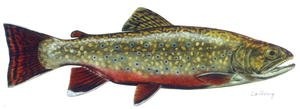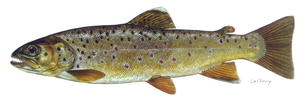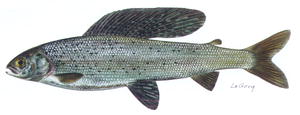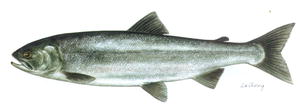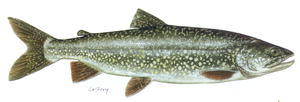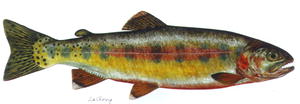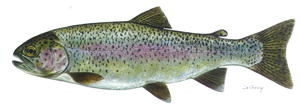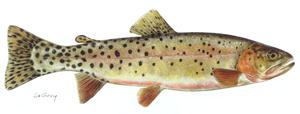 Cutthroat
Trout Cutthroat
Trout
(Oncorhynchus clarki pleuriticus)
The cutthroat trout is the only trout native to Wyoming. Six subspecies
of cutthroat originally occurred in Wyoming, though the greenback cutthroat
of the South Platte Drainage is now extinct in the state. The subspecies
still found in Wyoming include the Colorado River cutthroat from the Green
and Little Snake River Drainage, the Yellowstone cutthroat from the Yellowstone
Basin, the Bonneville cutthroat from the Bear River Drainage, the West
Slope cutthroat from the Upper Missouri Drainage in Yellowstone Park, and
the Snake River cutthroat from the Snake River Drainage. Cutthroat are
not native in the North Platte Drainage.
The Snake River cutthroat is a fine-spotted variety while the other
subspecies have larger spots. Cutthroat are spring spawners. Principal
food of the cutthroat is plankton and aquatic insects in lakes, and aquatic
insects in streams. Cutthroat over twelve inches, especially Snake River
cutthroat, often feed on small fish and crayfish. Most conventional trout
fishing techniques work fine for cutthroat - in fact, they are one of the
easiest trout to catch on hook and line. The state record cutthroat
weighed fifteen pounds and was taken from Native Lake, Sublette County
in 1959. Cutthroat can be distinguished from other trout by the orange
or red “cutthroat”
markings under the lower jaw. They are also distinguished from rainbow
trout by the presence of
very small basibranchial teeth (towards the back of the tongue) and
black spotting or purplish color of the pectoral, pelvic, and anal fins
which usually have white tips in rainbow trout. |

